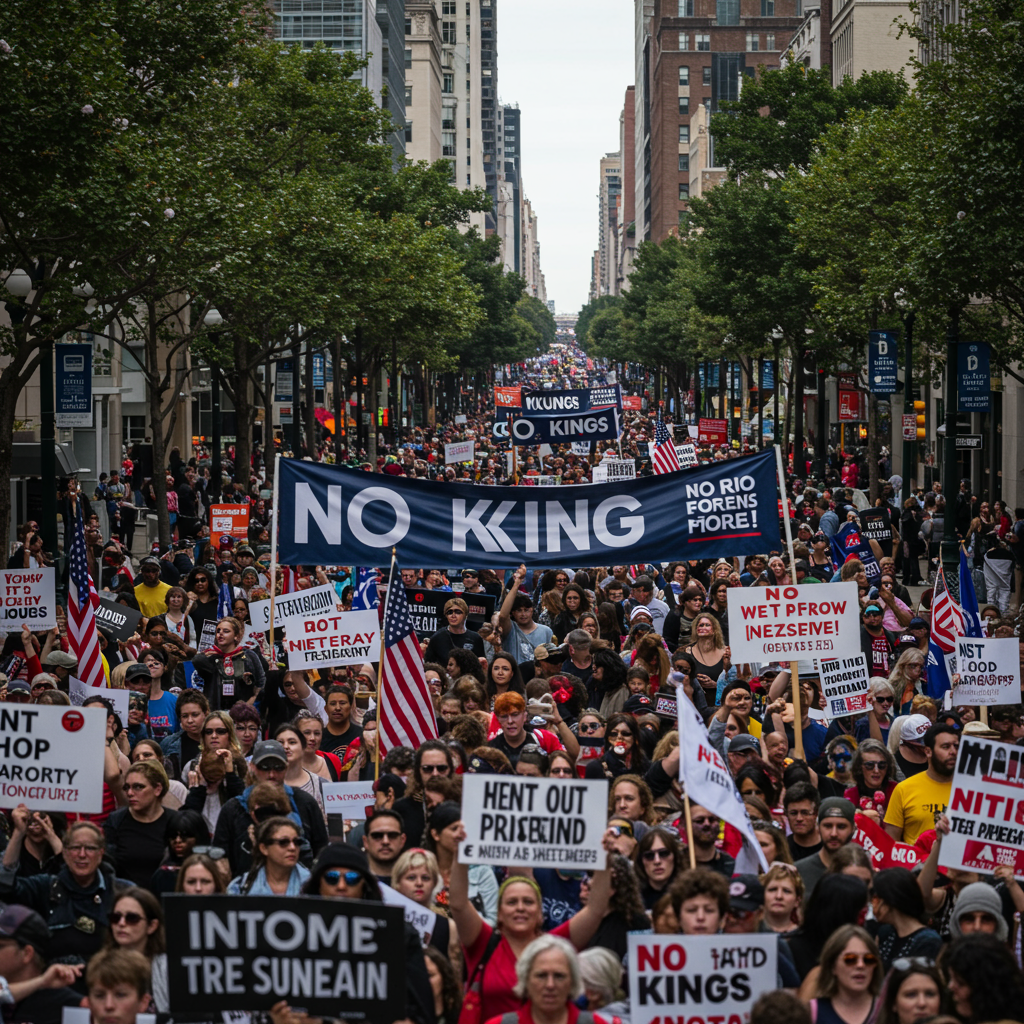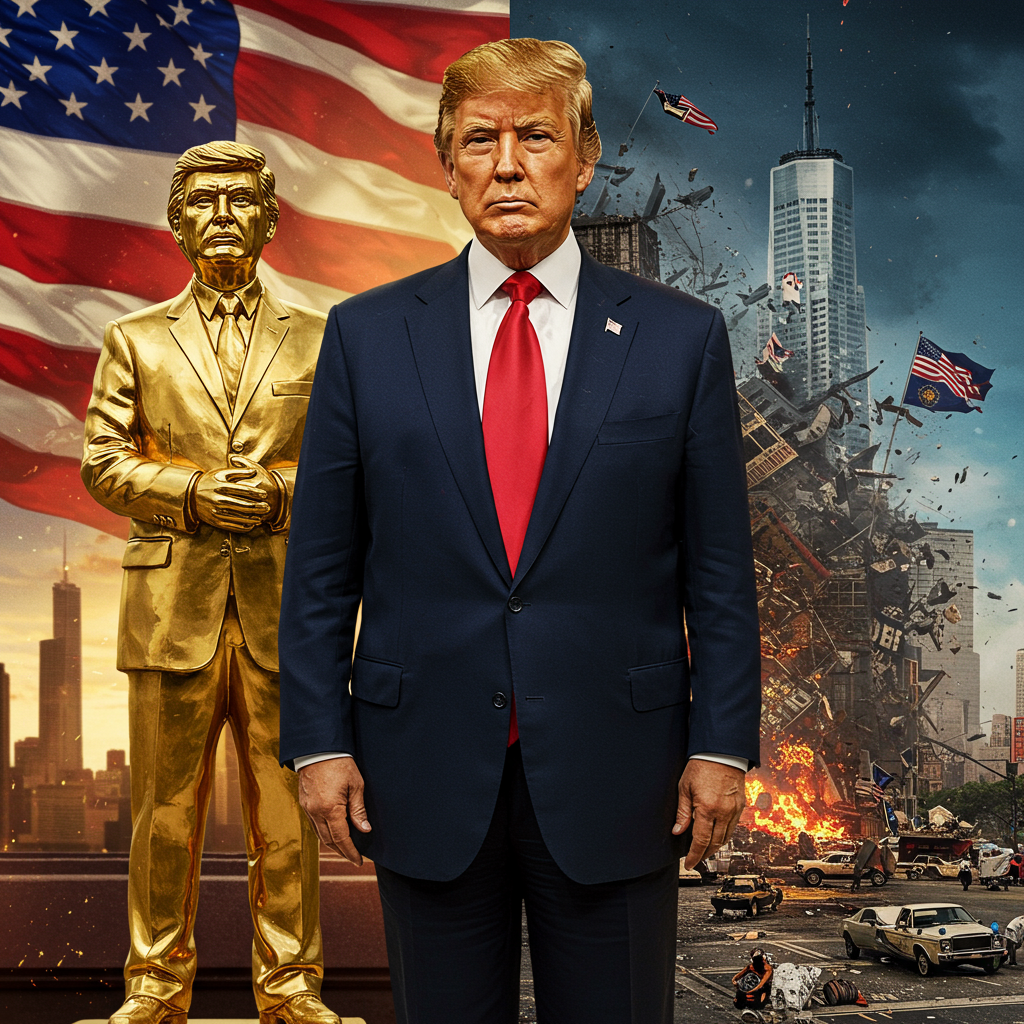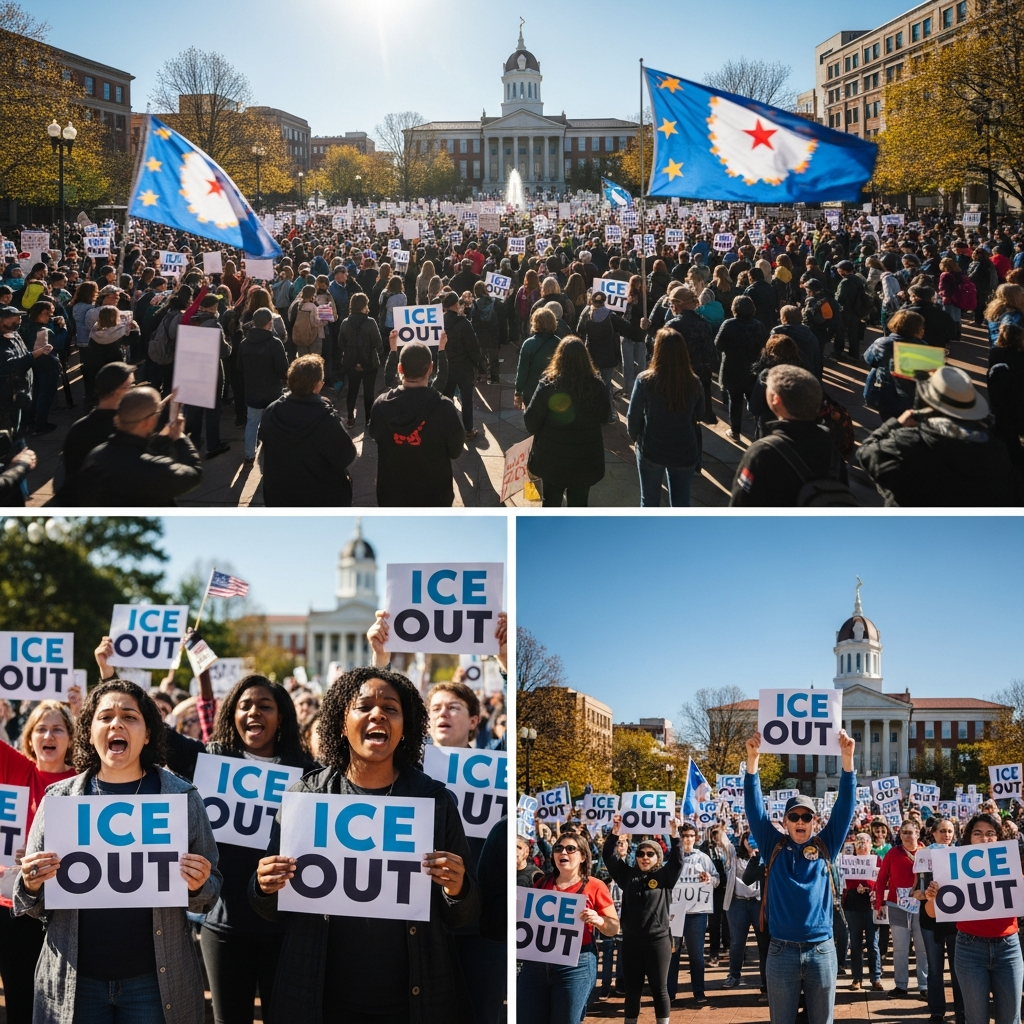Across the United States on Saturday, June 14, 2025, masses of demonstrators poured into streets, parks, and plazas, voicing potent opposition to President Donald Trump. Under the banner of the “No Kings” movement, participants in hundreds of events across the country called for protecting democracy and upholding immigrant rights, while rejecting what they described as authoritarian actions by the administration.
Organizers for the “No Kings” demonstrations and the coordinating 50501 Movement (“50 states, 50 protests, one movement”) claimed millions participated in rallies spanning nearly 2,000 locations, from major cities to small towns. The scale of the turnout underscored the depth of feeling against the president.
Why “No Kings”? The Heart of the Protest
The central theme, “No Kings,” was a direct challenge to the perceived authoritarian tendencies of the Trump administration. Organizers and protesters explicitly compared the president’s actions to those of a monarch, asserting that “Americans don’t do kings.” The movement aimed to counter what they termed billionaire-first politics and the militarization of democracy, calling for the president to be “dethroned.” This powerful slogan resonated with a diverse array of participants unified by concerns over the direction of the country.
A Nation Takes to the Streets
From coast to coast, cities and towns became stages for this widespread dissent. Huge, boisterous crowds gathered in metropolitan hubs like New York, Denver, Chicago, Austin, Los Angeles, Philadelphia, and Atlanta. In Atlanta, a 5,000-capacity event quickly reached its limit, with thousands more assembling outside. Participants marched through downtowns, rallied at state capitols, and converged in public squares, chanting slogans like “No kings,” “Trump must go now,” and “No kings. No crowns. We will not bow down.”
The atmosphere was often vibrant, with marchers dancing, drumming, and chanting shoulder-to-shoulder. Visuals ranged from serious political signs – such as “fight oligarchy” and “deport the mini-Mussolinis” – to satirical imagery like a larger-than-life puppet caricature of Trump wearing a crown and sitting on a golden toilet wheeled through crowds in Washington, D.C., or a 20-foot tall balloon of the president in a diaper seen in Los Angeles.
Diverse Motivations and Voices
The reasons for protesting were varied, reflecting the broad coalition united against the administration. Many expressed anger over federal immigration enforcement raids that had recently sparked unrest, including deployments of the National Guard and Marines to cities like Los Angeles. Others voiced concerns about the erosion of democratic norms, presidential ruling by executive order, and specific administration actions like layoffs at the CDC. Support for immigrant communities was a prominent theme, with Mexican flags frequently appearing alongside American flags, some of which were flown upside down as a sign of distress.
Participants shared deeply personal motivations:
Karen Van Trieste, a nurse who traveled to Philadelphia, emphasized the need to “defend our democracy.”
C.C. Téllez, an immigrant from Bolivia in Philadelphia, spoke about the American dream and the potential for everyone to belong.
In Los Angeles, Peter Varadi, a former Trump voter, expressed regret, stating he felt Trump had taken “this fascism to a new level,” potentially targeting various groups.
New York marchers cited reasons including anger over immigration policies, support for Palestinians, and worries about free speech.
Sean Kryston in New York spoke of concern for the country’s and the planet’s “existential crisis.”
Seda Heng in Minnesota, despite recent tragic shootings targeting lawmakers, felt compelled to attend to support her community.
Jocelyn Abarca in Charlotte protested against deportations and military deployments, stating, “If we don’t stop it now, it’s just going to keep getting worse.”
Tony Cropper, who traveled to Jackson, Mississippi, became emotional seeing diverse groups unite for causes often impacting people of color.
Adding patriotic elements, some groups handed out small American flags, while others wore Revolutionary War-era clothing or suffragette white dresses, connecting their fight to past movements for American rights.
Amidst Security and Isolated Incidents
The nationwide demonstrations occurred as President Trump attended a military parade in Washington, D.C., marking the Army’s 250th anniversary, which coincided with his 79th birthday. While a smaller protest took place in DC itself, the focus was on the widespread dissent across the country.
Governors and law enforcement agencies across the U.S. had urged calm and vowed “zero tolerance” for violence, with some mobilizing the National Guard as a precautionary measure. While the vast majority of events remained peaceful, a few isolated incidents of confrontation or security threats were reported:
In Los Angeles, after the formal event ended, police on horseback used force, striking some demonstrators with rods and batons, to clear streets near a federal building. Police had also used tear gas and crowd-control munitions earlier after the main rally concluded.
In Culpepper, Virginia, a driver intentionally accelerated an SUV into a crowd leaving a rally, striking one person. The driver was later charged with reckless driving.
In Minnesota, following recent fatal shootings targeting Democratic lawmakers (where the suspect reportedly had “No Kings” flyers), dozens of planned events were canceled, though tens of thousands still protested.
In Austin, Texas, a rally at the Capitol proceeded after a brief security shutdown due to a “credible threat” against state lawmakers expected to attend. One person was later arrested in connection with the threats.
Interactions with National Guard troops and Marines stationed at federal buildings were mixed, ranging from friendly fist bumps and selfies to chants of “shame” or “go home.”
The “No Kings Day of Defiance” represented a significant mobilization of opposition, weaving together concerns over democracy, rights, and the style of the Trump presidency into a powerful, nationwide statement against perceived authoritarianism on June 14, 2025.




